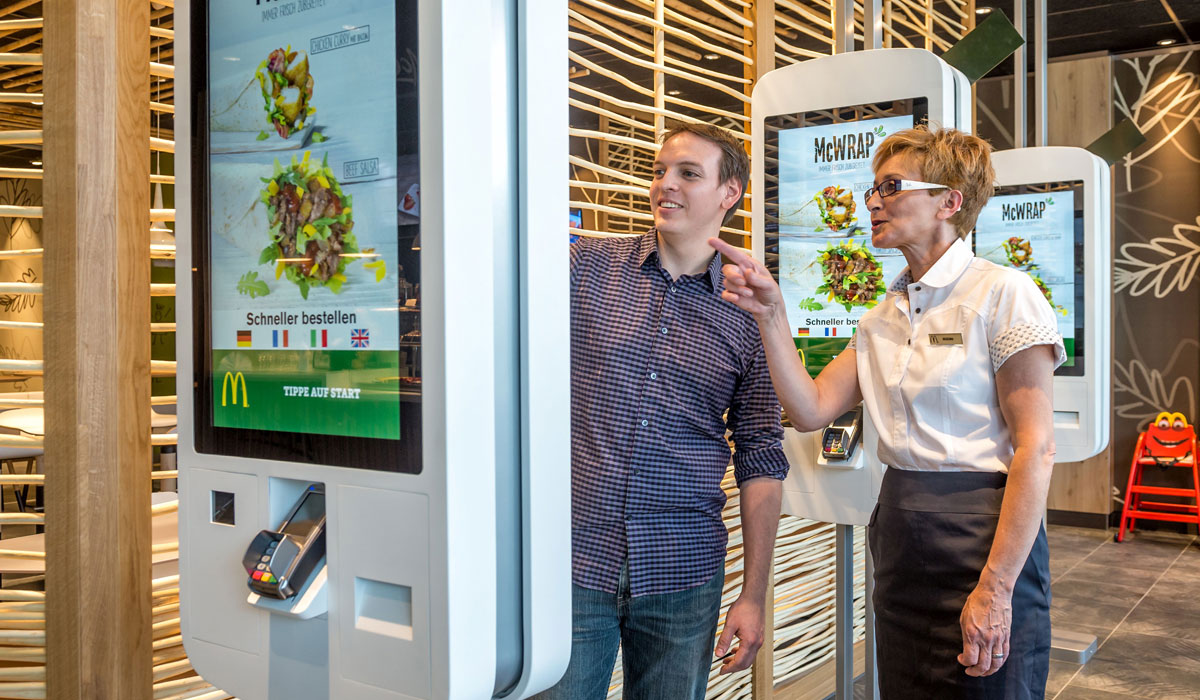There’s no secret kiosks are coming. McDonald’s said after its fourth-quarter earnings report in late January that it planned to invest $2.4 billion of capital in 2018, the majority of which would go to deploying its “Experience of the Future” design at U.S. locations. The main attraction: kiosk ordering. Subway also said it’s preparing to roll kiosks out in 2018 and beyond. So did Taco Bell. Wendy’s, too. Panera has had this technology live for years. Shake Shack opened a New York City store dedicated to it. Facial ordering is even a thing now.
This all backs what the data must show, right? Customers are eager for the technology, especially in an industry where convenience sits on the throne above all others.
Tillster, a global leader in digital ordering and engagement solutions for restaurant, launched its Self-Service Kiosk Index Monday. For the second consecutive year, the company partnered with research firm SSI to conduct a study on how offering self-service kiosk impacts guest behavior. The study surveyed 2,000 restaurant customers across the U.S. in an attempt to summarize customer-ordering habits with kiosks and illustrate how kiosks can lead to more visits.
“Restaurants are finally beginning to adopt self-service kiosks, and our research shows it’s an important offering in the customer’s eyes,” says Perse Faily, CEO of Tillster, in a statement. “And for restaurants, kiosks have proven to be optimized to achieve key objectives, such as increasing check size or improving speed of service.”
Here were some key findings from the data, which can be found here.
Lines can drive customers away
Naturally, kiosks can accelerate the ordering and checkout process. Not to mention doing so with less employees on the floor. “The Index pinpoints the line length that will cause customers to walk away from their favorite establishment in favor of a faster experience. However, if kiosk ordering is available, many customers will stick around,” the study says.
A technology for all ages
The data found, in the last three months, only 18 percent of customers surveyed have used a self-service ordering kiosk. However, 60 percent said they would visit a limited-service concept more often if they were available. This was true of older customers as well as tech-savvy millennials.
“Customers of all ages are now looking for digital interactions in restaurants, especially ones that provide them with a faster and easier dining experience,” Faily says.
Faily took some time to chat with QSR and dive deeper into the data.
How has the use of kiosks changed in the last five years?
Interest in and adoption of kiosk has steadily increased with both consumers and restaurant chains over the last five years. This has been driven by a number of factors, including digitally savvy consumers increasingly expecting control, choice and personalization when ordering; consumer familiarity with kiosks due to widespread use in other venues, such as airports; restaurant chain recognition of the operational and financial benefits of kiosks; and reduced technology costs.
Your research shows that consumer adoption has been low in recent months, probably attributed to slower adoption from the restaurants. Do you see growth in restaurant adoption this year? Or will it be a slower growth?
In the U.S., the rate of kiosk adoption by restaurants has lagged international markets. In the past year, we are seeing kiosk adoption in the US accelerate with quick-service restaurants leading the way. Consumer adoption of kiosks has been quite strong. Given that we are in the early stages of kiosk adoption and rollouts by US restaurants, it is striking that approximately 31 percent of surveyed quick-service guests had used a kiosk in a restaurant in the past 12 months and 54 percent of those plan to place an order with a kiosk within the next year. Restaurant guests are increasingly digital and expect to control their own ordering experiences, including in-restaurant.
It’s obvious customers want the option, what is the typical strategy behind rolling out kiosks for a restaurant chain? How much time does it take?
We recommend that restaurant chains interested in implementing and rolling out kiosks take a number of steps. A successful kiosk program requires the involvement of operations, marketing and IT. Your kiosk partner will assist this team in delivering a kiosk program that strikes the right balance between sales lift and speed of service for the restaurant chain. It is important to tune the experience to match business objectives and in-restaurant operational realities. This is typically done in an operational pilot. The rollout typically happens in phases with priority given to restaurants that meet a threshold profile based on volume of in-restaurant orders and traffic patterns and are geographic clustering.
What are the benefits/ROI once kiosks are implemented?
Kiosks positively impact restaurant revenues and profitability. As with other digital ordering, kiosks deliver higher average check than the counter. We typically see a lift in average check from kiosks ranging from 15–30 percent depending on whether we have created a kiosk experience optimized for speed of service or upselling. Kiosk orders typically have higher margin than counter orders as the kiosk ordering experience is designed to drive not only check, but also the sales of the higher margin menu items. For high volume restaurants or those that experience bursts of traffic, kiosks represent a cost effective option for adding order-taking capacity, thus line busting. The ability to take more orders during peak periods results in higher sales per labor hour. Our kiosk customers also experience lower shrink; order accuracy is higher when the guest is placing his own order. The combination of higher revenues and margins and higher sales per labor hour has a direct bottom line impact.













